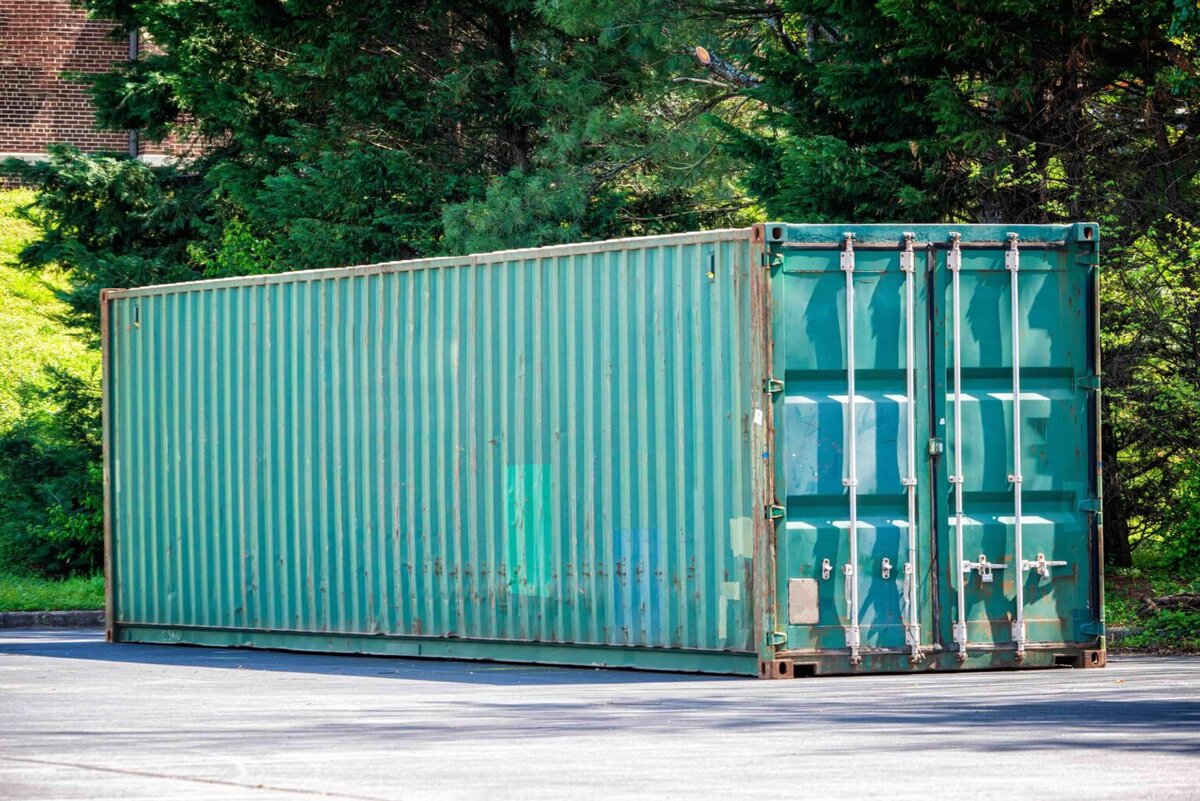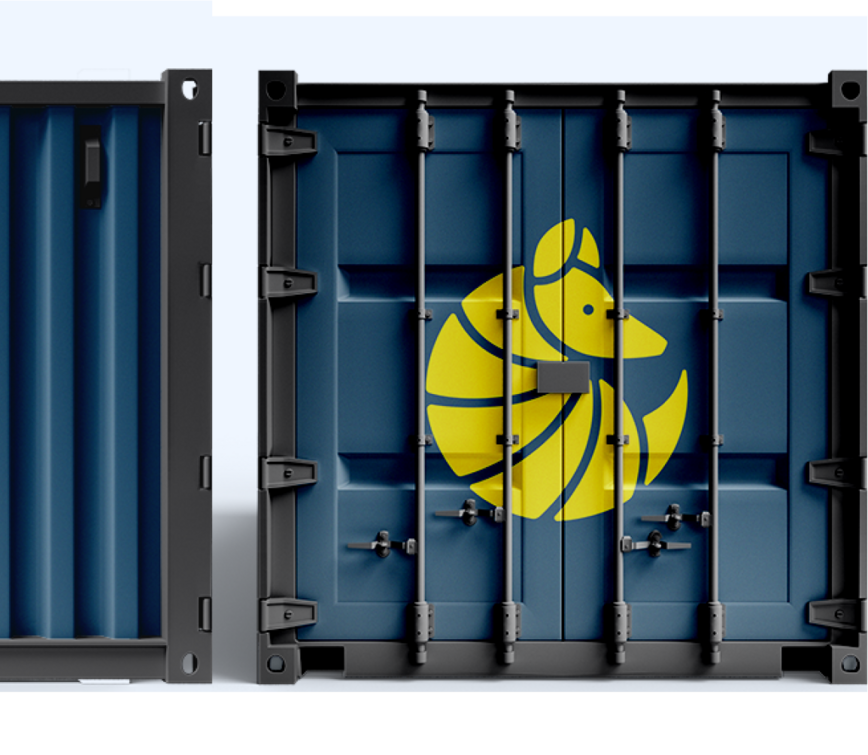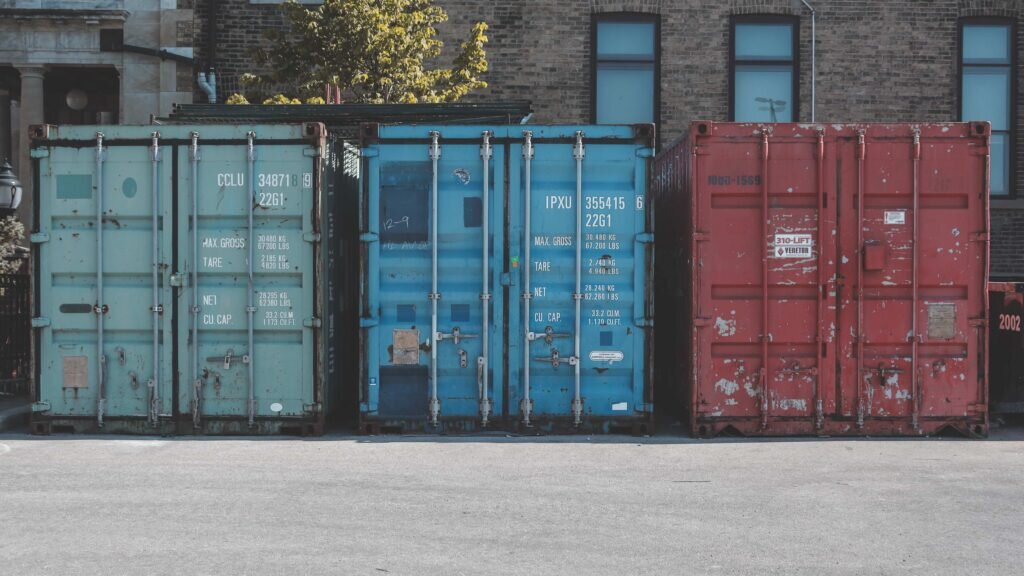Track my order

Shipping containers are anything but delicate. They’re built to withstand decades of international voyages by sea, all while protecting the precious cargo inside. They can endure long periods of exposure to heat, cold, snow, rain, wind and saltwater. Plus, they’re designed to be stacked on top of each other, carrying tons of weight without bending or bowing.
Essentially, containers are incredibly durable. The shipping lifespan of a standard container can extend to 25 years without needing a replacement. That’s over two decades of use!
While shipping containers are durable and long-lasting, they aren’t infallible. They will still require routine maintenance to stay in top condition and to reach the extent of their lifespan. Certain shipping container types mean you will need to maintain and repair your shipping container more than others.
In the process of buying a shipping container? Learn how to protect your purchase with this guide to basic container maintenance and repairs.
What Types of Shipping Containers Need More Maintenance?
There are three shipping container categories (grades) that are widely available for purchase: one-trip, cargo-worthy, and wind and watertight. Each of these grades will come with different maintenance and repair needs.

New “One-Trip” Containers:
One-trip containers have shipped a single load of dry cargo to the country. Since they are in top condition, they will not require any upfront maintenance on your part. Boxhub's new "one-trip" shipping containers are also protected by a three-year condition guarantee.
Cargo-Worthy Containers:
Cargo-worthy containers are used shipping containers that are still able to be certified for shipping purposes. They will have some signs of wear and tear, but they will be able to pass a CSC surveyor’s inspection.
Wind and Watertight Containers:
Wind and watertight containers are used containers that have been retired from shipping. They are typically around 10-15 years old. Though no longer used for shipping, wind and watertight containers can be used for other purposes. Popular uses include self-storage units, workshops and studios.
As their name suggests, wind and watertight containers are still structurally sound. Their floors remain intact. Their doors seal properly. They don’t have any detectable holes or leaks in the walls or roof, effectively keeping the elements from forcing their way inside.
Since these containers have been in use for years, they are more likely to have accumulated signs of wear and tear — like rust, dents, scratches and other forms of cosmetic damage.
So, container grade matters! You may need to start making minor repairs to a 20 foot used container a couple of years after your purchase. A one-trip container, however, may last a decade before needing any repairs.

How to Run Maintenance on Your Shipping Container

Close the Doors
One of the easiest acts of shipping container maintenance is to keep the doors closed as much as possible. Keeping the doors closed will prevent dust, debris, moisture and even pests from making their way inside the shipping container. So, if the entrance doesn’t need to be wide open, the doors should be firmly sealed.
Keep It Level
Another simple act of shipping container maintenance is to store your container on a solid, level surface. Storing your container on a surface that isn’t level could cause moisture to pool around the container or on the roof. It can also cause parts of the structure to warp from their usual shape. The flooring could become irregular and buckle. The doorway could slant, making the doors difficult to open and close properly. Thus, a levelled surface is an important preventative measure when caring for your shipping container..
Sweep the Roof
Rainwater, snow and debris can collect onto the flat surface of your shipping container’s roof. Consider routinely sweeping these off the roof, as these elements can cause corrosion over time. The longer you let them sit, the more potential damage they could do — so try to keep the surface clear.
Clean It
Cleaning is an essential step in maintaining your container and helping it look its best. If you’re wondering how to clean a shipping container, start with the interior. Sweep out any dust or debris on the floor. Then, use a hose or a pressure washer to spray down the interior. Follow the same step on the exterior walls.
After you’re finished spraying the container, you will want to let it dry thoroughly. If you don’t do this, you could trap moisture inside the container, causing mold and mildew, corrosion, and an unpleasant odor. Wash it on a hot, sunny day so that you can open up the doors and let the interior dry out on its own. If you need more assistance, use items like carpet dryers and fans to speed up the process.
Lubricate Hinges
The hinges on your shipping container doors will also need some maintenance. They can get rusty, slow and squeaky over time. So, give the hinges a thorough clean and then use a lubricating spray like WD-40 on them.
How to Manage Repairs for Your Shipping Container
Eliminate Rust
One of the most common shipping container repairs you might need to do is to eliminate rust patches. Shipping containers are made of COR-TEN steel, which is designed to minimize corrosion (rust) when exposed to high levels of moisture. While it minimizes the effects of corrosion, the material is not impervious to rust over time, especially when it makes frequent trips by sea.
Patches of rust are prone to developing around joints, hinges, dents and scratches. How can you remove it? Go over the patch with a wire brush first, and then rub it with sandpaper. Once the rust has been scrubbed away, clean the area with white vinegar. You may need to repaint the area after you’ve finished.
Cover Scratches
Another common shipping container repair that you might need to make is covering scratches. Your container might collect cosmetic scratches that expose the base metal underneath the paint. You can cover up the scratches with a fresh layer of moisture-repelling paint. If the scratches are deep, you can use a sealant to fill in the grooves first and then paint them.
Replace Rubber Gaskets
Shipping containers have rubber gaskets around the doors to prevent moisture from reaching the interior. Over time, these weatherproofing seals undergo wear and tear. So, one of the shipping container repairs that you might need to make is replacing these seals when they start to break.
Replace Damaged Floors
The plywood flooring inside the container can undergo wear and tear. It can also warp from water damage, poor weight distribution and uneven surfaces. You may need to remove the old panels from the floor frame and replace them.
Fix Dents
Dents can accumulate on the roof of the shipping container, where the most weight is placed. Large dents create vulnerabilities where water can pool, causing more rust and deterioration. So, try to repair large dents on your shipping container as soon as possible. They can be smoothed out by banging the opposite surface with a hammer.
Repair Tears
The last thing that you want is a tear or hole in your container — this will make your container vulnerable to moisture intrusion, which can impact the cargo inside. The best method of repairing small tears in your shipping container is to weld them shut. Then, coat the area with moisture-resistant paint.
Larger tears will require special attention. You may need to hire professionals to patch up the tear with COR-TEN steel and weld it shut.

About Nina Barango
Nina Barango is an experienced content marketer and container expert with a proven track record in the tech and logistics industry. Having worked with various startups and SMEs, she bridges the world of marketing, tech and shipping containers. When she's not creating content that'll revolutionize global container trade, you can find Nina reading a book or mastering her video editing skills.







Continue Shopping
Loading cart

